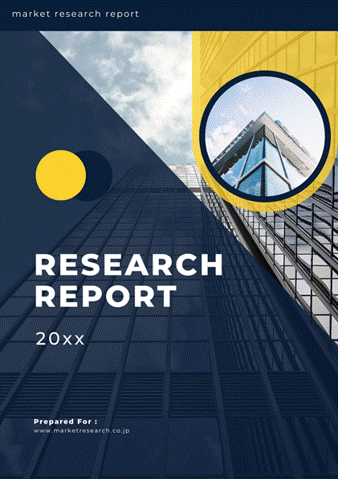 | • レポートコード:B-MOR-041051 • 出版社/出版日:Mordor Intelligence / 2018年2月 • レポート形態:英文、PDF、120ページ • 納品方法:Eメール(受注後2営業日) • 産業分類:農業 |
| Single User(1名様用) | ¥629,000 (USD4,250) | ▷ お問い合わせ |
| Team User(7名様用) | ¥666,000 (USD4,500) | ▷ お問い合わせ |
| Corporate User | ¥1,295,000 (USD8,750) | ▷ お問い合わせ |
• お支払方法:銀行振込(納品後、ご請求書送付)
レポート概要
| 本資料は、SDHI(コハク酸脱水素酵素阻害剤)殺菌剤の世界市場について調べ、SDHI(コハク酸脱水素酵素阻害剤)殺菌剤の世界規模、市場動向、市場環境、用途別(作物ベース、非作物ベース)分析、アメリカ市場規模、ヨーロッパ市場規模、アジア市場規模、日本市場規模、中国市場規模、関連企業情報などをまとめた調査レポートです。 ・イントロダクション ・エグゼクティブサマリー ・SDHI(コハク酸脱水素酵素阻害剤)殺菌剤の世界市場インサイト ・SDHI(コハク酸脱水素酵素阻害剤)殺菌剤の世界市場環境 ・SDHI(コハク酸脱水素酵素阻害剤)殺菌剤の世界市場動向 ・SDHI(コハク酸脱水素酵素阻害剤)殺菌剤の世界市場規模 ・SDHI(コハク酸脱水素酵素阻害剤)殺菌剤の世界市場規模:用途別(作物ベース、非作物ベース) ・SDHI(コハク酸脱水素酵素阻害剤)殺菌剤の世界市場:地域別市場規模・分析 ・SDHI(コハク酸脱水素酵素阻害剤)殺菌剤の北米市場規模・予測 ・SDHI(コハク酸脱水素酵素阻害剤)殺菌剤のアメリカ市場規模・予測 ・SDHI(コハク酸脱水素酵素阻害剤)殺菌剤のヨーロッパ市場規模・予測 ・SDHI(コハク酸脱水素酵素阻害剤)殺菌剤のアジア市場規模・予測 ・SDHI(コハク酸脱水素酵素阻害剤)殺菌剤の日本市場規模・予測 ・SDHI(コハク酸脱水素酵素阻害剤)殺菌剤の中国市場規模・予測 ・SDHI(コハク酸脱水素酵素阻害剤)殺菌剤のインド市場規模・予測 ・関連企業情報・競争状況 |
The global SDHI fungicide market was calculated at USD 1799.35 million in 2016, and is expected to register a CAGR of 19.9% during the forecast period 2018 – 2023. Europe was the largest SDHI fungicides market, accounting for 37% share of the global market in 2016.
Evolving R&D Priorities – The Major Driving Force
Major fungicide players in the market, such as, Syngenta, Bayer, BASF, etc., are investing heavily in R&D to develop SDHI fungicides. Syngenta’s new SDHI fungicide, Elatus Era, is a result of sustained investment into R&D for more than 15 years. Syngenta, with its focus on developing new agronomic strategies to address the next green revolution, developed seed treatment fungicide, Sedaxane, which is presently being marketed under the trade name VIBRANCE. Seed treatment is likely to play a key role in enhancing crop performance.
Agrochemical giants are focusing on R&D and new product launches. Owing to companies’ interest in the said class of fungicides, SDHI’s share in the fungicides market has increased from 8.98% in 2014, to 11.25% in 2016, and it is estimated to reach 22.95% by 2023.
South America to Witness the Fastest Growth
There is an increasing demand trend for crop-protection products, such as, fungicides that include SDHI fungicides for seed treatment and crop protection from the countries, like Brazil and Argentina. The trend is expected to sustain and act as growth drivers for the SDHI fungicide market of South America.
Further, with the off-patenting of some of the major SDHI active ingredients, such as, sedaxane and benzovindiflupyr in the coming years, an increase the availability and reach of SDHI fungicides to these regions is expected in a better and competitive prices, thereby pushing the growth in this segment is a substantial manner.
Key Players: SYNGENTA, BASF, BAYER AG, DUPONT, FMC, CERTIS
Reasons to Purchase this Report
• The factors responsible for driving and constraining the market
• Analyzing various perspectives of the market with the help of Porter’s five forces analysis
• Analysis on all the segments with conclusions
• To have an understanding of the fastest growing or/and largest regions during the forecast period
• For getting abreast of the latest developments, market shares and strategies employed by the major market players.
• Future Outlook of the Market
• 3 months analyst support along with the Market Estimate sheet in excel. Customization of the Report
• Countries of client’s interest can be included in report based on feasibility of report.
• Companies of client’s interest can be included in report based on feasibility of report.
1. Introduction
1.1 Definition of the Market
1.2 Key Findings of the Study
2. Research Scope and Methodology
2.1 Study Deliverables
2.2 Study Assumptions
2.3 Research Methodology
2.4 Research Phases
3. Market Dynamics
3.1 Drivers
3.1.1 Increasing Demand for Food (Meat/Grain)
3.1.2 Evolving R&D Priorities
3.1.3 Adoption of New Farming Practices
3.2 Restraints
3.2.1 Regulatory Concerns
3.2.2 High Production Costs and Wastage
3.2.3 Decreasing Arable Land
4. Industry Analysis
4.1 Porter's Five Forces Analysis
4.1.1 Bargaining Power of Suppliers
4.1.2 Bargaining Power of Buyers
4.1.3 Threats of New Entrants
4.1.4 Threats of Substitute Products and Services
4.1.5 Degree of Competition
5. Market Segmentation
5.1 By Application
5.1.1 Crop-Based
5.1.1.1 Cereals
5.1.1.1.1 Wheat
5.1.1.1.2 Maize
5.1.1.1.3 Rice
5.1.1.1.4 Barley
5.1.1.1.5 Others
5.1.1.2 Oilseeds
5.1.1.2.1 Rapeseed
5.1.1.2.2 Soybean
5.1.1.2.3 Cotton
5.1.1.2.4 Others
5.1.1.3 Fruits
5.1.1.3.1 Stone Fruits
5.1.1.3.2 Pome Fruits
5.1.1.3.3 Others
5.1.1.4 Vegetables
5.1.2 Non-Crop- Based
5.1.2.1 Turf and Ornamental Grass
5.1.2.2 Others
5.2 By Geography
5.2.1 North America
5.2.1.1 US
5.2.1.2 Canada
5.2.1.3 Mexico
5.2.1.4 Others
5.2.2 Europe
5.2.2.1 Spain
5.2.2.2 UK
5.2.2.3 France
5.2.2.4 Germany
5.2.2.5 Russia
5.2.2.6 Italy
5.2.2.7 Others
5.2.3 Asia-Pacific
5.2.3.1 China
5.2.3.2 Japan
5.2.3.3 India
5.2.3.4 Australia
5.2.3.5 Others
5.2.4 South America
5.2.4.1 Brazil
5.2.4.2 Argentina
5.2.4.3 Others
5.2.5 Africa
5.2.5.1 South Africa
5.2.5.2 Others
6. Competitor Analysis
6.1 Market Shares of Leading Players
6.2 Strategies Adopted by Leading Players
7. Company Profiles
7.1 Syngenta
7.2 BASF
7.3 Arysta LifeScience
7.4 Bayer Cropscience Ag
7.5 DuPont
7.6 FMC
7.7 Certis Europe
7.8 Isagro
8. Future Outlook of the Market
9. Appendix